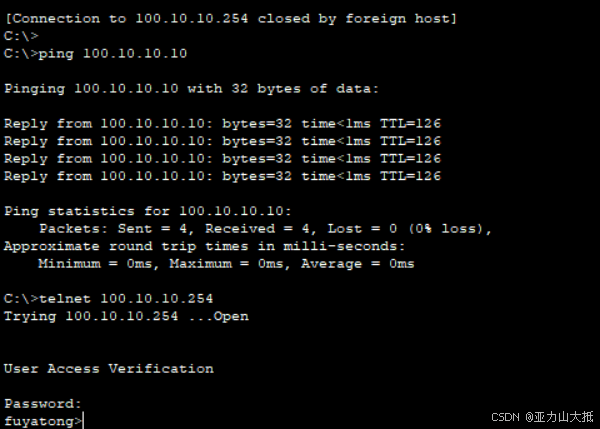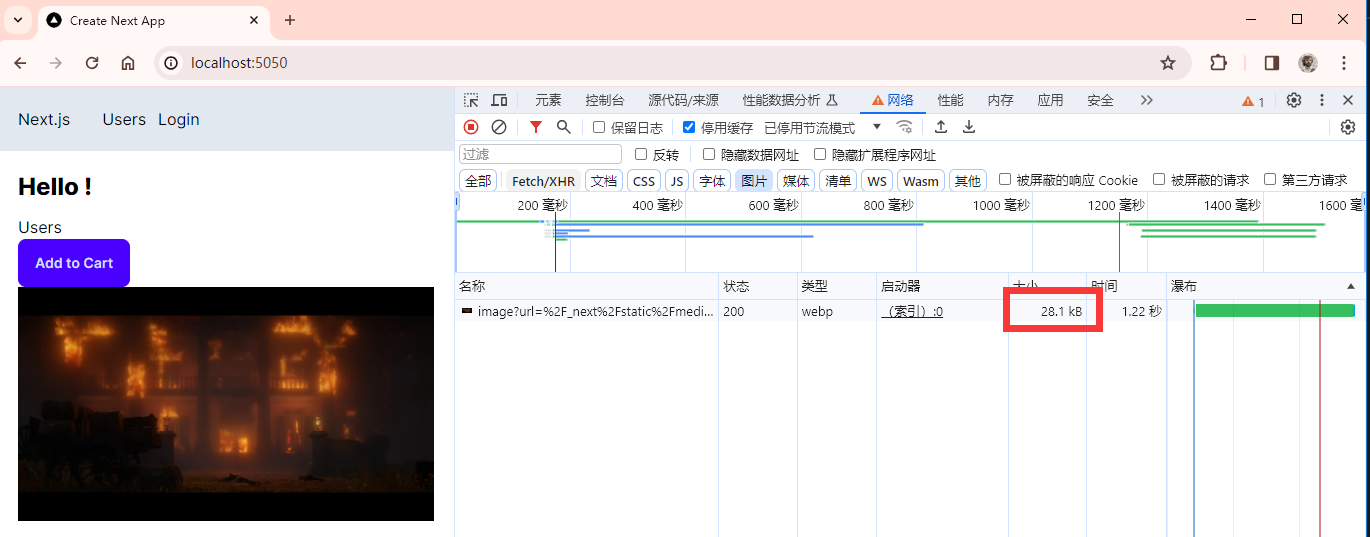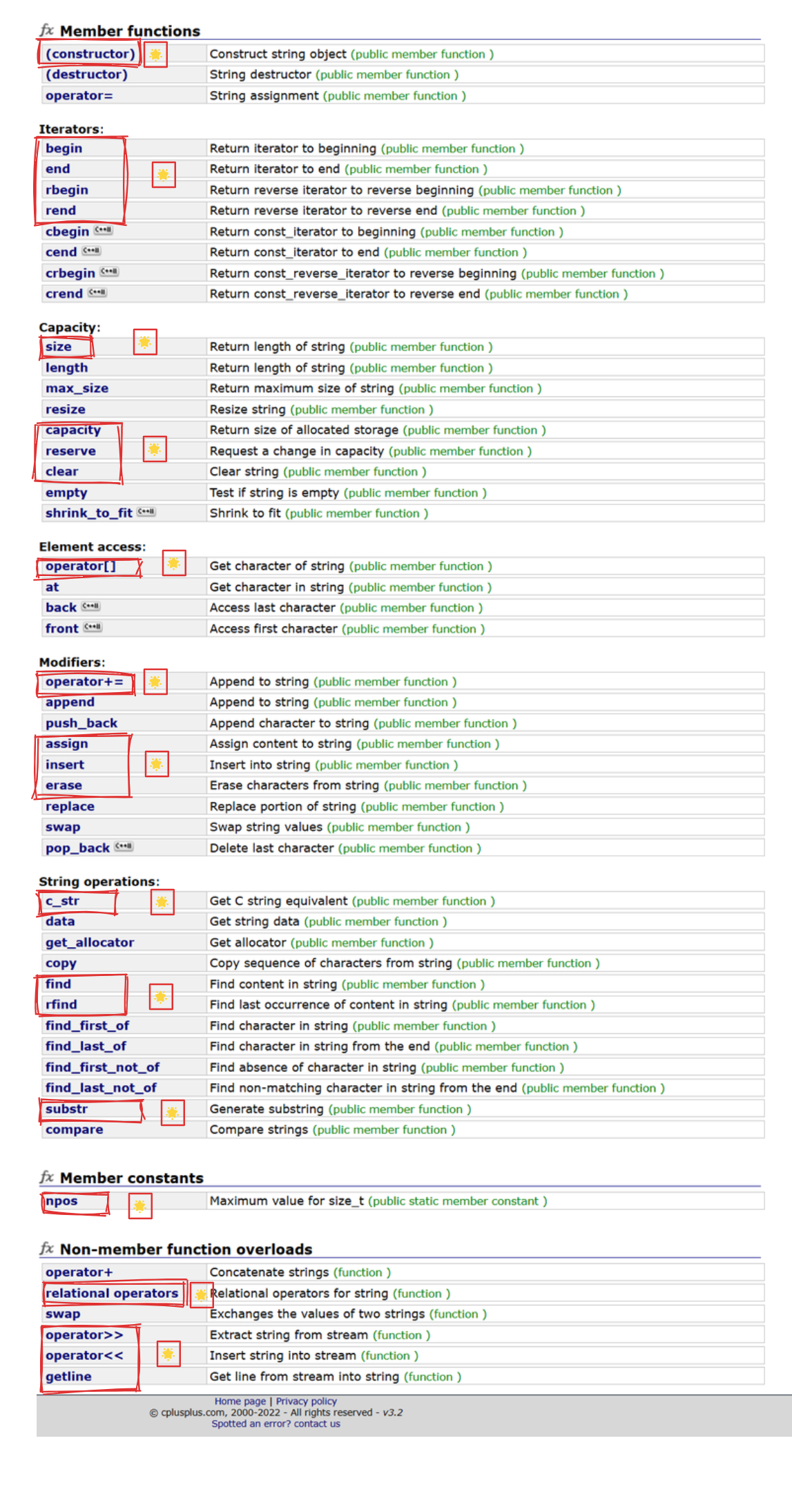前期知识准备
1 构造函数


(1)默认构造函数:没有参数传入,也没有在类里面声明



(2)手动定义默认构造函数:没有参数传入,但是在类里面进行了声明
可以在类外实现或者类内实现

以下案例是类外实现了手动定义的默认构造函数

构造函数的调用:不需要手动调用,定义类对象的时候就实现了自动调用
int main()
{Human zhangshan; 定义对象,此处会自动调用构造函数......
}
(2)自定义重载构造函数,名字相同,内容不同



(3)拷贝构造函数
拷贝构造函数的两种调用方式

拷贝构造函数的定义,关键字const以及引用符号&,引用符号&后面可接变量,也可以不接

拷贝被造函数的类外定义

(a) !!!!如果不定义拷贝函数而使用了拷贝功能,c++会自动生成一个拷贝函数,实现的是浅拷贝
直接将数据拷贝过去,如果只是普通的数据类型是没有关系的,但是如果是指针,就会出现问题,以下列案例为例:
假设一开始定义了3个类,将如花拷贝给张山的girlfriend变量,也就是girlfriend指向如花

没有定义拷贝函数的情况下,实现的拷贝,浅拷贝,也就是不同类对象指向同一块内存地址,前面完成拷贝之后,再修改h1的值,还是导致h2,h3的值都被修改,这将导致错误。正确的逻辑是,拷贝之后,h1,h2,h3之间的值不再相互干扰除非再次执行赋值函数
#include <iostream>
#include<string.h>
#include<graphics.h>using namespace std;
#define ADDR_LEN 64 //宏class Human {
public:Human();Human(int salary);void description();void setAddr(char *addr);private:int age = 18;int salary;char *addr;
};void Human::description()
{cout << "addr = " << addr << endl;
}Human::Human(int salary)
{salary = 20000;this->addr = new char[ADDR_LEN]; //指针需要进行初始化分配空间strcpy_s(this->addr, ADDR_LEN, "china");
}Human::Human()
{salary = 20000;this->addr = new char[ADDR_LEN]; //指针需要进行初始化分配空间strcpy_s(this->addr, ADDR_LEN, "china");
}void Human::setAddr(char* addr)
{if (!addr){return;}strcpy_s(this->addr, ADDR_LEN, addr);
}int main(void)
{Human h1;Human h2 = h1;Human h3(h1);h1.description();h2.description();h3.description();cout << "修改h1地址之后" << endl;char addrrr[ADDR_LEN] = "Ammerica";h1.setAddr(addrrr);h1.description();h2.description();h3.description();system("pause");return 0;
}

定义拷贝函数的情况下,给指针变量单独开辟新的空间,使得新的对象和旧的对象在调用该指针成员函数的时候,不再指向同一块内存
#include <iostream>
#include<string.h>
#include<graphics.h>using namespace std;
#define ADDR_LEN 64 //宏class Human {
public:Human();Human(int salary);void description();void setAddr(char *addr);/Human(const Human &other); //自定义拷贝函数,深拷贝/
private:int age = 18;int salary;char *addr;
};/
Human::Human(const Human& other)
{age = other.age;salary = other.salary;//addr是指针,要为其分配一个独立的内存,来存放新的对象的addr,使得新的对象和旧的对象在调用该指针成员函数的时候,不再指向同一块内存this->addr = new char[ADDR_LEN];strcpy_s(this->addr, ADDR_LEN, other.addr);
}
/void Human::description()
{cout << "addr = " << addr << endl;
}Human::Human(int salary)
{salary = 20000;this->addr = new char[ADDR_LEN]; //指针需要进行初始化分配空间strcpy_s(this->addr, ADDR_LEN, "china");
}Human::Human()
{salary = 20000;this->addr = new char[ADDR_LEN]; //指针需要进行初始化分配空间strcpy_s(this->addr, ADDR_LEN, "china");
}void Human::setAddr(char* addr)
{if (!addr){return;}strcpy_s(this->addr, ADDR_LEN, addr);
}int main(void)
{Human h1;Human h2 = h1;Human h3(h1);h1.description();h2.description();h3.description();cout << "修改h1地址之后" << endl;char addrrr[ADDR_LEN] = "Ammerica";h1.setAddr(addrrr);h1.description();h2.description();h3.description();system("pause");return 0;
}

(b) 什么时候拷贝构造函数会被调用

情形1:函数调用时,函数的实参是对象,形参不是引用类型,会调用拷贝构造函数导致额外的开销,这种情况推荐是使用引用,将不会调用拷贝构造函数,不会创新新的空间导致额外的开销

如果函数声明改成了 void showMsg(Human &man)则不对调用自定义构造函数,而是调用自动生成的构造函数
使用引用相当于传递了指针,可以在这个函数里面修改外面的参数。这样很危险,比如,下列函数的本意是打印信息,而不是修改成员函数,这样将导致打印的成员函数的值出现错误
void showMsg(Human &man)
{cout < man.getName() << endl;man.setAddr("Janpa“);
}
添加const修饰,使得在函数内不能修改成员函数
也就是void showMsg(const Human &man)
由于const修饰了man。man.getName()将会报错,因为man.getName()不是const类型的函数
所以 在定义的时候需要将string getName(); 改成string getName() const; 则表示不能在函数里面修改成员变量
#include <iostream>
#include<string.h>
#include<graphics.h>using namespace std;
#define ADDR_LEN 64 //宏class Human {
public:Human();Human(int salary);void description();void setAddr(char *addr);Human(const Human &other); //自定义拷贝函数,深拷贝
private:int age = 18;int salary;char *addr;
};Human::Human(const Human& other)
{age = other.age;salary = other.salary;//addr是指针,要为其分配一个独立的内存,来存放新的对象的addr,使得新的对象和旧的对象在调用该指针成员函数的时候,不再指向同一块内存this->addr = new char[ADDR_LEN];strcpy_s(this->addr, ADDR_LEN, other.addr);cout << "调用了拷贝构造函数" << endl;
}void Human::description()
{cout << "addr = " << addr << endl;cout << "salary = " << salary << ",age = " << age << endl;
}Human::Human(int salary)
{salary = 20000;this->addr = new char[ADDR_LEN]; //指针需要进行初始化分配空间strcpy_s(this->addr, ADDR_LEN, "china");
}Human::Human()
{salary = 20000;this->addr = new char[ADDR_LEN]; //指针需要进行初始化分配空间strcpy_s(this->addr, ADDR_LEN, "china");
}void Human::setAddr(char* addr)
{if (!addr){return;}strcpy_s(this->addr, ADDR_LEN, addr);
}void showMsg(Human man)
{cout << "showMsg : " << endl;man.description();
}int main(void)
{Human h1;//Human h2 = h1;showMsg(h1);//Human h3(h1);//h1.description();//h2.description();//h3.description();//cout << "修改h1地址之后" << endl;char addrrr[ADDR_LEN] = "Ammerica";h1.setAddr(addrrr);//h1.description();//h2.description();//h3.description();system("pause");return 0;
}

情形2:函数的返回值是类的情况,且这个类不是引用会调用构造函数才能构造一个对象。如果返回值是类引用,则是指针,直接使用原始数据,而不是先开辟空间来存放数据之后再使用,这样就不需要构建一个对象
下面这种情况是返回值是类的情况,会调用自定义的构造函数
Human getBetterMan(Human& man1, Human& man2)
{if (man1.getSalary() > man2.getSalary()){return man1;}else{return man2;}
}int main(void)
{Human h1(35000);Human h2(25000);getBetterMan(h1, h2); //这里这么写,会返回一个临时对象,但是没有东西接收,有一个对象需要调用构造函数才能构造一个对象,此处调用的是拷贝构造函数system("pause");return 0;
}
下面这种情况是返回值是类引用,不会调用自定义的构造函数
const Human& getBetterMan(const Human& man1, const Human& man2)
{if (man1.getSalary() > man2.getSalary()){return man1;}else{return man2;}
}
- const常见错误




情形3:初始化成员列表

2 析构函数
主要是动态指针内存的清理。
析构函数不能带参数。只有一种形式

class Human {
public:Human();Human(int salary);void description() const;void setAddr(char* addr);void showMsg(const Human& man);int getSalary() const;Human(const Human& other); //自定义拷贝函数,深拷贝//析构函数~Human(); //析构函数不能带参数
private:int age = 18;int salary;char* addr;
};Human::~Human()
{cout << "调用析构函数 : " << this << endl;delete addr;
}
3 静态成员
3.1 静态成员
统计总共创建了多少个类对象,什么时候使用静态成员,当需要使用的数据是涉及到所有对象的时候,所有对象都要使用的时候,就需要定义静态成员函数

方法1:定义全局变量
#pragma once#include<string.h>
#include <iostream>
using namespace std;
#define ADDR_LEN 64 //宏
extern int HumanCount; // 全局变量别人都可以修改,可能重名且不安全,开发的时候全局变量越少越好class Human {
public:Human();Human(int salary);void description() const;void setAddr(char* addr);void showMsg(const Human& man);int getSalary() const;Human(const Human& other); //自定义拷贝函数,深拷贝//析构函数~Human(); //析构函数不能带参数
private:int age = 18;int salary;char* addr;//int HumanCount; //直接在这里使用这样是不行的,每个对象有自己的HumanCount,没办法做对象的计数static int HumanCount; //静态成员变量的内存和类本身并不是一块内存
};#pragma once#include<string.h>
#include <iostream>
using namespace std;
#define ADDR_LEN 64 //宏
extern int HumanCount; // 全局变量别人都可以修改,可能重名且不安全,开发的时候全局变量越少越好class Human {
public:Human();Human(int salary);void description() const;void setAddr(char* addr);void showMsg(const Human& man);int getSalary() const;Human(const Human& other); //自定义拷贝函数,深拷贝//析构函数~Human(); //析构函数不能带参数
private:int age = 18;int salary;char* addr;//int HumanCount; //直接在这里使用这样是不行的,每个对象有自己的HumanCount,没办法做对象的计数static int HumanCount; //静态成员变量的内存和类本身并不是一块内存
};
#include<string.h>
#include <iostream>
using namespace std;
#define ADDR_LEN 64 //宏
#include "Human.h"int HumanCount = 0;Human::~Human()
{cout << "调用析构函数 : " << this << endl;delete addr;
}int Human::getSalary() const
{return salary;
}Human::Human(const Human& other)
{age = other.age;salary = other.salary;//addr是指针,要为其分配一个独立的内存,来存放新的对象的addr,使得新的对象和旧的对象在调用该指针成员函数的时候,不再指向同一块内存this->addr = new char[ADDR_LEN];strcpy_s(this->addr, ADDR_LEN, other.addr);cout << "调用了自定义拷贝构造函数" << endl;
}void Human::description() const
{cout << "addr = " << addr << endl;cout << "salary = " << salary << ",age = " << age << endl;
}Human::Human()
{salary = 20000;this->addr = new char[ADDR_LEN]; //指针需要进行初始化分配空间strcpy_s(this->addr, ADDR_LEN, "china");HumanCount++;
}Human::Human(int salary)
{this->salary = salary;HumanCount++;
}void Human::setAddr(char* addr)
{if (!addr){return;}strcpy_s(this->addr, ADDR_LEN, addr);
}
方法2:定义静态成员函数
静态成员变量的内存和类本身并不是一块内存
在类里面定义静态成员

静态成员的初始化,然后就像使用全局变量一样使用他就可以


如果使用const标识的静态成员函数
静态成员函数在定义的时候就可以直接初始化,但是非const的静态成员函数定义的时候不能初始化
const static int humanCount = 0; 或者去.cpp咯i面
const int Human::humanCount = 0;
#pragma once#include<string.h>
#include <iostream>
using namespace std;
#define ADDR_LEN 64 //宏class Human {
public:Human();Human(int salary);void description() const;void setAddr(char* addr);void showMsg(const Human& man);int getSalary() const;Human(const Human& other); //自定义拷贝函数,深拷贝//析构函数~Human(); //析构函数不能带参数int getHumanCount();private:int age = 18;int salary;char* addr;//int HumanCount; //直接在这里使用这样是不行的,每个对象有自己的HumanCount,没办法做对象的计数static int HumanCount; //静态成员变量的内存和类本身并不是一块内存
};
#include<string.h>
#include <iostream>
using namespace std;
#define ADDR_LEN 64 //宏
#include "Human.h"//对类的静态成员初始化
int Human::HumanCount = 0;
。。。。int Human::getHumanCount()
{return HumanCount;
}
void showMsg(const Human &man)
{cout << "showMsg : " << endl;man.description();
}void test()
{Human h1;{Human h2;// h2先死,然后h1死}cout << "test() end." << endl;
}int main(void)
{Human f1, f2, f3, f4;Human F4[4] = { f1, f2, f3, f4};test();cout << "总人数 : " << f1.getHumanCount() << endl;system("pause");return 0;
}
4 静态成员函数
使用常规的成员函数调用静态成员变量存在一个问题,见void showMsg()函数
void showMsg()
{//这里为了调用getHumanCount来调用静态成员变量,而定义了一个新的对象,导致最后的计数是3,但是实际在test里面只实际创建了两个对象,整个函数里创建这个对象是对于的Human tem1;cout << "总人数 : " << tem1.getHumanCount() << endl;
}void test()
{Human h1;Human h2;
}int main(void)
{test();showMsg();system("pause");return 0;
}
#####################################
定义静态成员函数
#pragma once#include<string.h>
#include <iostream>
using namespace std;
#define ADDR_LEN 64 //宏class Human {
public:static int getHumanCount();private://int HumanCount; //直接在这里使用这样是不行的,每个对象有自己的HumanCount,没办法做对象的计数static int HumanCount; //静态成员变量的内存和类本身并不是一块内存
};//对类的静态成员初始化
int Human::HumanCount = 0;int Human::getHumanCount()
{return HumanCount;
}
void showMsg()
{//static定义的变量或者函数,不属于某一个具体的对象,而是类的东西,可以直接通过类访问cout << "总人数 : " << Human::getHumanCount() << endl;
}void test()
{Human h1;Human h2;//对象也可以直接访问静态成员函数cout << "总人数 : " << h1.getHumanCount() << endl;
}int main(void)
{test();showMsg();system("pause");return 0;
}

静态成员函数如果直接访问类的成员变量,那就不知道访问的是哪一个具体对象的成员变量,是不行的
- 静态的成员函数,不能调用非静态的成员函数(static定义的一般是类的东西,共用的东西,而用户可以创建很多类对象,每个类对象可以定义自己的变量,所以用公共的东西去访问个人的东西是不合理的)

- 静态成员函数不能访问非静态成员函数(static定义的一般是类的东西,共用的东西,而用户可以创建很多类对象,每个类对象可以定义自己的变量,所以用公共的东西去访问个人的东西是不合理的)

5 组合和聚合
组合和聚合最大的区别在于,
前者是类之间是高度关联的,同生同灭,一起创建,一起销毁
后者类之间互不关联
5.1 组合,一个类里面调用另一个类,非指针的形式
学习要点
- 一个类在另一个类里面的定义方式
- 一个类里面对另一个类的初始化方式


主函数
#include<string>
#include<stdio.h>
#include<iostream>
#include "Computer.h"
using namespace std;
void test()
{Computer myComputer("intel","i9",1000,8);
}
int main()
{test();return 0;
}
Computer.h, 一个类在另一个类里面的定义方式
#pragma once
#include<string>
#include<stdio.h>
#include<iostream>
#include "Cpu.h"
using namespace std;
//class Cpu;
class Computer
{
public:Computer(const char* cpuBrand, const char* cpuVersion, int hardDisk, int memory);~Computer();
private://声明方式1Cpu cpu; //如果声明用#include "Cpu.h",这里定义了一个对象,那就会需要自动调用它的构造函数,因此必须要包含头文件//声明方式2,下面是定义了一个指针,还没有创建对象,指针可以指向任何东西,所以不需要包含头文件//Cpu *cpu; //要用class Cpu声明;int hardDisk; //硬盘,单位 Gint memory; // 内存
};
Computer.cpp, 一个类里面对另一个类的初始化方式
#include "Computer.h"
Computer::Computer(const char* cpuBrand, const char* cpuVersion,int hardDisk, int memory):cpu(cpuBrand, cpuVersion) //对成员函数对象初始化的方式1
{//this->cpu = Cpu(cpuBrand, cpuVersion); 对成员函数对象初始化的方式2this->hardDisk = hardDisk;this->memory = memory;
}
Computer::~Computer()
{}
Cpu.h
#pragma once
using namespace std;
#include<string>
class Cpu
{
public:Cpu(const char *brand= "intel", const char* version = "i5");~Cpu();
private:string brand; //品牌string version; //型号
};
Cpu.cpp
#include "Cpu.h"
using namespace std;
#include<string>
#include<iostream>
Cpu::Cpu(const char* brand, const char* version)
{this->brand = brand;this->version = version;//打印当前函数名cout << __FUNCTION__ << endl;
}
Cpu::~Cpu()
{cout << __FUNCTION__ << endl;
}
5.1.2 组合,一个类里面调用另一个类,指针的形式
Computer.h
#pragma once
#include<string>
#include<stdio.h>
#include<iostream>using namespace std;class Cpu;class Computer
{
public:Computer(const char* cpuBrand, const char* cpuVersion, int hardDisk, int memory);~Computer();private://声明方式1//Cpu cpu; //如果声明用#include "Cpu.h",这里定义了一个对象,那就会需要自动调用它的构造函数,因此必须要包含头文件//声明方式2,下面是定义了一个指针,还没有创建对象,指针可以指向任何东西,所以不需要包含头文件Cpu *cpu; //要用class Cpu声明;int hardDisk; //硬盘,单位 Gint memory; // 内存
};
Computer.cpp
#include "Computer.h"Computer::Computer(const char* cpuBrand, const char* cpuVersion,int hardDisk, int memory)
{this->cpu = new Cpu(cpuBrand, cpuVersion); //对成员函数对象初始化的方式2this->hardDisk = hardDisk;this->memory = memory;}Computer::~Computer()
{delete cpu;
}
5.2 聚合
下面案例对VoiceBox* box;的调用就是所谓聚合关系,Computer的销毁不会引起VoiceBox的销毁
class Computer
{
public:Computer(const char* cpuBrand, const char* cpuVersion, int hardDisk, int memory);~Computer();void addVoiceBox(VoiceBox* box);
private://声明方式1//Cpu cpu; //如果声明用#include "Cpu.h",这里定义了一个对象,那就会需要自动调用它的构造函数,因此必须要包含头文件//声明方式2,下面是定义了一个指针,还没有创建对象,指针可以指向任何东西,所以不需要包含头文件Cpu *cpu; //要用class Cpu声明;VoiceBox* box;int hardDisk; //硬盘,单位 Gint memory; // 内存
};
#include "Computer.h"Computer::Computer(const char* cpuBrand, const char* cpuVersion,int hardDisk, int memory)
{this->cpu = new Cpu(cpuBrand, cpuVersion); //对成员函数对象初始化的方式2this->hardDisk = hardDisk;this->memory = memory;
}
Computer::~Computer()
{delete cpu;
}
void Computer::addVoiceBox(VoiceBox* box)
{this->box = box;
}
6 vector 常见错误
下列案例,对同一个人的信息打印,结果却不一样


#include<string>
#include<stdio.h>
#include<iostream>
#include <vector>
using namespace std;class Man {
public:Man() {};void play(){count += 10;cout << "I am playing ..." << endl;}int getDrinbgkCount()const{return count;}
private:int count = 0; //一共喝了多少杯
};
int main()
{Man zhangfei, guanyu, liubei;vector<Man> men;men.push_back(liubei);men.push_back(guanyu);men.push_back(zhangfei);men[0].play();cout << men[0].getDrinbgkCount() << endl;cout << liubei.getDrinbgkCount() << endl;return 0;
}

7 继承和派生,两个是一回事,本质是相同的,



- 案例,男孩和女孩类有很多相同的代码, int getAge() const; string getName() const;如果代码量大,可能会有更多的冗余
男孩类
#pragma once
#include<string>
#include<vector>using namespace std;
class Girl;class Boy
{
public:Boy();Boy(int age, string name, int salary);~Boy();int getAge() const;string getName() const;int getSalary() const;bool satisfied(const Girl& girl)const;string description() const;//静态成员函数可以通过类名来调用,不需要通过创建类对象来调用,这个功能在这里很重要。程序的逻辑是,直接添加一个对象,而不能通过先创建//一个对象之后,再用这个对象来调用这个添加函数,这个逻辑是不合理的,所以要使用静态成员函数static void inputBoys(vector< Boy>&boys);
private:int age;string name;int salary;
};
女孩类
#pragma once
#include<string>
#include<vector>
using namespace std;
class Boy;class Girl
{
public:Girl();Girl(int age, string name, int yanzhi);~Girl();//如果成员函数不会改变你的传入的变量,最好加个constint getAge() const; string getName() const;int getYanzhi() const;bool satisfied(const Boy &boy)const;string description() const;static void inputGirls(vector< Girl>& girls);
private:int age;string name;int yangZhi;
};
7.1 继承和派生的实现

- 主要知识点1
//创建Son构造函数时,需要手动调用父类的构造函数,用来初始化父类的数据
// r如果不手动调用,就会默认调用父类的默认构造函数,也就是啥参数都不传的Father()
//再调用自己Son的构造函数,初始化自己的数据
Son::Son(const char* name, int age, const char* game):Father(name,age)
{cout << __FUNCTION__ << endl;this->game = game;//name和age在父类里面已经初始化了,子类就不需要再初始化了
}
- 主要知识点2:重载什么时候使用,父类的某个成员函数功能不能满足子类,子类想扩展或改良父类的这个函数,就会重载,再再子类重新写一遍这个函数
子类不能访问父类的私有成员函数或变量,但是又想访问父类的私有成员,可以将父类的私有成员改成protected,或者用父类的公有成员函数实现间接访问父类的私有成员函数,如父类的name是私有变量,子类想要访问的话,可以通过父类的getName函数获取父类的name名字
//父类和子类有一个同名的成员函数,调用的时候,会先在自己的成员函数列表里面找,如果找不到,才会去父类的列表里面找
string Son::description()
{//son类继承父类,不能访问父类的私有成员// //stringstream ret;//ret << "name:" << name << "-年龄:" << age;//return ret.str();// 如果想用重载,但是又想访问父类的私有成员,可以将父类的私有成员改成protected,或者用父类的公有成员函数实现间接访问父类的私有成员函数stringstream ret;ret << "name:" << getName() << "-年龄:" << getAge() << ", game:" << getGame();return ret.str();
}
——————————————————————————————————————————
主函数
#include <iostream>
#include "Father.h"
#include "Son.h"
#include "string"
using namespace std;int main(void){Father wjl("王健林", 68);Son wsc("王思聪", 32, "电竞");cout << wjl.description() << endl;cout << wsc.description() << endl;return 0;
}
#pragma once
#include <string>
#include<iostream>using namespace std;class Father
{
public:Father(const char *name, int age);~Father();string getName();int getAge();string description();private:string name;int age;
};************************************************************************************
#include "Father.h"
#include <sstream>Father::Father(const char* name, int age)
{cout << __FUNCTION__ << endl;this->name = name;this->age = age;
}Father::~Father()
{
}string Father::getName()
{return name;
}int Father::getAge()
{return 0;
}string Father::description()
{stringstream ret;ret << "name:"<< name << "-年龄:" << age ;return ret.str();}#pragma once
#include "Father.h"class Son: public Father
{
public:Son(const char*name, int age, const char*game);~Son();string getGame();string description(); //父类的这种方法不能满足子类的要求,但是文件名又不想修改,想修改函数里面的内容
private:string game;
};*************************************************************
#include "Son.h"
#include <sstream>//创建Son构造函数时,需要手动调用父类的构造函数,用来初始化父类的数据
// r如果不手动调用,就会默认调用父类的默认构造函数,也就是啥参数都不传的Father()
//再调用自己Son的构造函数,初始化自己的数据
Son::Son(const char* name, int age, const char* game):Father(name,age)
{cout << __FUNCTION__ << endl;this->game = game;//name和age在父类里面已经初始化了,子类就不需要再初始化了
}Son::~Son()
{
}string Son::getGame()
{return game;
}//父类和子类有一个同名的成员函数,调用的时候,会先在自己的成员函数列表里面找,如果找不到,才会去父类的列表里面找
string Son::description()
{//son类继承父类,不能访问父类的私有成员// //stringstream ret;//ret << "name:" << name << "-年龄:" << age;//return ret.str();// 如果想用重载,但是又想访问父类的私有成员,可以将父类的私有成员改成protected,或者用父类的公有成员函数实现间接访问父类的私有成员函数stringstream ret;ret << "name:" << getName() << "-年龄:" << getAge() << ", game:" << getGame();return ret.str();
}7.2 为什么要有protected类型的定义
- 知识点1:类创建的对象本身,也不能直接访问私有变量
Father fjr;
不允许通过fjr.name 访问私有变量name - 知识点2: 类内部函数之间是可以直接访问自己的私有变量的
- 知识点3: 一个类,如果希望他的成员变量可以被自己的子类直接访问,但是又不想被外部访问(也就是创建对象之后,直接用自己类创建的对象访问自己的私有变量,对应知识点1),就可以将变量定义为protected


7.3 子类对父类的访问权限问题 ?????

7.4 子类和父类之间构造函数的调用顺序
静态成员只调用一次


class M {public:M() { cout << __FUNCTION__ << endl; }
};class N {
public:N() { cout << __FUNCTION__ << endl; }
};class A {
public:A() { cout << __FUNCTION__ << endl; }
};class B:public A {
public:B() { cout << __FUNCTION__ << endl; }private:M m1;M m2;static N ms;
};N B::ms; //静态成员int main(void) {B b;return 0;
}
7.5 子类的析构函数调用
子类的析构函数的调用顺序正好和构造函数的调用顺序相反
7.6 子类型
(a)定义
子类具有单向传递性,C是B的子类型,B是A的子类型,则C也是A的子类型

(b) 子类型的作用
以下三种

#include <iostream>
#include "string"
#include<Windows.h>
using namespace std;class Father {
public:void play() {cout << "Father KTV sing" << endl;}
};class Son :public Father {
public:void play() {cout << "Son eat chiken" << endl;}
};//void party(Father* f1, Father* f2)
//{
// f1->play();
// f2->play();
//}void party(Father f1, Father f2)
{f1.play();f2.play();
}int main(void) {Father yangkang;Son yangguo;//party(&yangkang,&yangguo);party(yangkang, yangguo); //两个调用的都是父亲的playcout << "*************************************************************" << endl;cout << " 以下三种情况的本质都是 子类的东西都是从父类继承的,父类有的子类一定有" << endl;cout << "*************************************************************" << endl;cout << "" << endl;cout << "------------父类指针指向子类对象,调用的是父类的东西--------------" << endl;//父类指针指向子类对象Father wjl;Son wsc;Father* p;p = &wsc;p->play();cout << "------------父类引用指向子类对象--------------" << endl;Father wjl_2;Son wsc_2;Father &p2 = wsc_2;p2.play();cout << "------------父类对象直接赋值给子类对象,本质是子类的东西都是从父类继承的,父类有的子类一定有-------------" << endl;Father wjl_3;Son wsc_3;wjl_3 = wsc_3;wsc_3.play();system("pause");return 0;
}
8 多重继承的使用
8.1 什么是多重继承

-
知识点1:继承的声明的两个地方
Son class 构造函数创建 的地方class Son:public Father, public Mother,以及Son的构造函数的实现
Son::Son(const char* food, const char* game, const char* lastName, const char* firstName):Father(lastName, firstName), Mother(food) -
知识点2:继承多个构造函数,先调用谁的,是依次调用,谁写在前面先调用谁
-
知识点3:子类继承多个类的时候,构造函数初始化多个父类的时候,只需要传入儿子没有的,且不需要重复传入,
Son::Son(const char* food, const char* game, const char* lastName, const char* firstName):Father(lastName, firstName), Mother(food) { this->game = game; }这个地方,父类和母亲类都有自己的const char* lastName, const char* firstName, 但是只在初始化父亲的时候传递了这两个参数
#pragma once
#include "Father.h"
#include "Mother.h"class Son:public Father, public Mother
{
public:Son(const char* food, const char* game,const char* lastName, const char* firstName);~Son();void playGame();
private:std::string game;
};#include "Son.h"
#include "string"
#include <iostream>
using namespace std;Son::Son(const char* food, const char* game,const char* lastName, const char* firstName):Father(lastName, firstName), Mother(food)
{this->game = game;
}Son::~Son()
{
}void Son::playGame()
{cout << "play game" << endl;
}- 知识点:1:如果子类继承的多个类有同名函数,则调用的时候需要指定调用谁
wsc.Father::dance(); 或者 wsc.Mother::dance();
#include <iostream>
#include "string"
#include<Windows.h>
using namespace std;
#include "Son.h"int main(void) {Son wsc("wang","si cong","chuan cai","CHiji");wsc.playBasketball();wsc.playGame();//父亲类和母亲类都有这个函数,子类继承了父亲和目前,会产生歧义,报错//wsc.dance();//需要限定函数或者子类自己写一个dance函数,在函数里面指定调用谁wsc.Father::dance();wsc.Mother::dance();system("pause");return 0;
}//*********************************************************
#pragma once
#include "Father.h"
#include "Mother.h"class Son:public Father, public Mother
{
public:Son(const char* food, const char* game,const char* lastName, const char* firstName);~Son();void playGame();
private:std::string game;
};#include "Son.h"
#include "string"
#include <iostream>
using namespace std;Son::Son(const char* food, const char* game,const char* lastName, const char* firstName):Father(lastName, firstName), Mother(food)
{this->game = game;
}Son::~Son()
{
}void Son::playGame()
{cout << "play game" << endl;
}
//*********************************************************
#pragma once
#include "string"class Father
{
public:Father(const char * lastName = "wu ming", const char* firstName = "wu xing");~Father();void playBasketball();void dance();//保护和私有只影响继承关系,私有的子类不能直接访问
protected:std::string lastName; std::string firstName;
};
#include <iostream>
#include "string"
#include "Father.h"
using namespace std;Father::Father(const char* lastName,const char* firstName)
{this->firstName = firstName;this->lastName = lastName;
}Father::~Father()
{}void Father::playBasketball()
{cout << " playBasketball" << endl;
}void Father::dance()
{cout << " 霹雳舞" << endl;
}//*********************************************************
#pragma once
#include "string"class Mother
{
public:Mother(const char* food,const char* lastName = "wu ming", const char* firstName = "wu xing");~Mother();void dance();//保护和私有只影响继承关系,私有的子类不能直接访问
protected:std::string lastName;std::string firstName;std::string food;
};
#include "Mother.h"#include <iostream>
#include "string"
using namespace std;Mother::Mother(const char* food,const char* lastName, const char* firstName)
{this->firstName = firstName;this->lastName = lastName;this->food = food;
}Mother::~Mother()
{}void Mother::dance()
{cout << " dancing" << endl;
}
8.2 菱形继承存在的问题

- 知识点:上面的无线座机继承了座机类和手机类,会导致歧义,同名成员函数或变量,使用的时候需要指定是哪个类的成员
FixedLine::number;,按道理来说主函数设置了号码,打印号码应该是设置值,但是打印的是Tel类里面的数值
#include <iostream>
#include "string"
#include<Windows.h>
using namespace std;//电话类
class Tel {
public:Tel() {this->number = "123456";}protected:string number;
};//座机
class FixedLine :public Tel {
public:};//手机
class MpobilePhone :public Tel {};//无线座机
class WirelessTel :public FixedLine, public MpobilePhone {
public:void setNumber(const char* number) {//number 不明确,继承了2个number,FixedLine和MpobilePhone里面各继承了一个//this->number = number;this->FixedLine::number = number;}string getNumber(){return this->MpobilePhone ::number;}
};int main(void) {WirelessTel phone;phone.setNumber("1234556677");cout << phone.getNumber() << endl;system("pause");return 0;
}
8.3 解决菱形继承访问歧义问题的方法:虚基类和虚继承
- 知识点:虚基类对本身是没有任何影响的,只是他有多个子类,为了方便后面的使用
class FixedLine :virtual public Tel
#include <iostream>
#include "string"
#include<Windows.h>
using namespace std;//电话类
//此时共同的主线Tel类就是虚基类
class Tel {
public:Tel() {this->number = "123456";}protected:string number;
};//座机, 虚继承
class FixedLine :virtual public Tel {
public:};//手机
class MpobilePhone :virtual public Tel {};//无线座机
class WirelessTel :public FixedLine, public MpobilePhone {
public:void setNumber(const char* number) {//number 不明确,继承了2个number,FixedLine和MpobilePhone里面各继承了一个this->number = number; //FixedLine和MpobilePhone改成虚基类就可以//this->FixedLine::number = number;}string getNumber(){return this->number;}
};int main(void) {WirelessTel phone;phone.setNumber("1234556677");cout << phone.getNumber() << endl;system("pause");return 0;
}9 文本读取和写入 C++流

- 文件的读写,只能用自带的,下面的类之间是继承的关系

9.1 对文件进行读写

- 向文件夹写东西,直接默认覆盖以前的东西
#include <iostream>
#include "string"
#include<Windows.h>
#include <fstream>
using namespace std;int main(void) {string name;int age;// 默认是写操作ofstream outfile; //定义了一个文件输出流对象,//使用输出流对象打开一个文件outfile.open("user.txt"); //会覆盖原来的内容while (1){cout << "请输入姓名:[ctrl+z 退出]";cin >> name;if (cin.eof()) {break;}//把输入的姓名写入wenjainoutfile << name << "\t";cout << "请输入年龄:[ctrl+z 退出]";cin >> age;//把输入的姓名写入wenjainoutfile << age << "\n";}//关闭文件outfile.close();system("pause");return 0;
}
- 读文件
#include <iostream>
#include "string"
#include<Windows.h>
#include <fstream>
using namespace std;int main(void) {string name;int age;ifstream inFile;inFile.open("user.txt");while (1){if (inFile.eof()) {break;}inFile >> name;cout << name << "\t";inFile >> age;cout << age << endl;}inFile.close();system("pause");return 0;
}9.2 对二进制文件的读写

- 写二进制文件
#include <iostream>
#include "string"
#include<Windows.h>
#include <fstream>
using namespace std;int main(void) {string name;int age;ofstream outFile;outFile.open("user.dat", ios::out | ios::trunc| ios::binary);while (1){cout << "请输入姓名:[ctrl+z 退出]";cin >> name;outFile << name << "\t";if (cin.eof()) {break;}cout << "请输入年龄:[ctrl+z 退出]";cin >> age;//outFile << age << endl; 会转成字符串,然后存在二进制文件里面,是错的outFile.write((char*)&age, sizeof(age));}outFile.close();system("pause");return 0;
}- 读二进制文件
#include <iostream>
#include "string"
#include<Windows.h>
#include <fstream>
using namespace std;int main(void) {string name;int age;ifstream inFile;inFile.open("user.dat", ios::in | ios::binary);while (1){inFile >> name;if (inFile.eof()) {break;}cout << name << "\t";//文件里面的字符\t,不会自动跳过,需要手动char tmp;inFile.read(&tmp, sizeof(tmp));inFile.read((char*)&age,sizeof(age));cout << age << endl;}inFile.close();system("pause");return 0;
}
9.3 按照置钉的格式读写文件
- 写文件
知识点: 利用利用stringstream来对数据进行格式化
#include <iostream>
#include "string"
#include<Windows.h>
#include <fstream>
#include <sstream>
using namespace std;int main(void) {string name;int age;ofstream outFile;outFile.open("user.txt");while (1){cout << "请输入姓名:【ctrl+z 退出】:";cin >> name;if (cin.eof()){break;}cout << "请输入年龄:【ctrl+z 退出】:";cin >> age;//利用stringstream来对数据进行格式化stringstream s;s << "姓名: " << name << "\t\t年龄" << age << endl;outFile << s.str();}outFile.close();system("pause");return 0;
}

- 读文件
c语言按照指定格式读文件方式
#include <iostream>
#include "string"
#include<Windows.h>
#include <fstream>
#include <sstream>
using namespace std;int main(void) {char name[32];int age;ifstream inFile;string line;inFile.open("user.txt");while (1){getline(inFile, line);if (inFile.eof()){break;}sscanf_s(line.c_str(), "姓名:%s 年龄%d", name, sizeof(name), &age);cout << "姓名: " << name << "\t\t\t年龄" << age << endl;}inFile.close();system("pause");return 0;
}
10 位图算法


一个字节是8位,所谓快速算法,牺牲空间。如果最大数到21,那就需要用3个字节,28个位

#include <iostream>
#include "string"
#include<Windows.h>
#include <fstream>
#include <sstream>
using namespace std;void init(char* data, int len)
{//这里假设一个需求,//假设能被3整除的数都在这个集合中,假设有40亿个数据,这里是为了测试算法效果unsigned int n = len * 8;for (unsigned int i = 0; i <n; i++){if (i % 3 == 0){char* p = data + i / 8;*p = *p | (1 << (i % 8));}}
}bool check(char* data, int len,int value)
{//定位到指定的字节char* p = data + value / 8;bool ret = *p & (1 << (value % 8));//判断这个字节中指定的位是否为1return ret;
}int main(void) {//分配一块足够的空间来存放位图unsigned int n = 4000000000;int len = n / 8 + 1;char* data = (char*)malloc(len);memset(data, 0, len); //清0//装载数据集合init(data,len);while (1){printf("输入要检测是数【输入-1退出】:");int value;scanf_s("%d", &value);if (value == -1){break;}if (check(data, len, value)){printf("%d 数据在集合中\n",value);}else{printf("%d 数据不在集合中\n", value);}}return 0;
}11 文件流的定位 读取指定位置的信息

11.1 - 实现:读取当前文件的最后50个字节
#include <iostream>
#include "string"
#include<Windows.h>
#include <fstream>
#include <sstream>
using namespace std;
int main(void) {ifstream infile;string line;infile.open("test.cpp");if (!infile.is_open()) {return 1;}infile.seekg(-50, infile.end);while (!infile.eof()){getline(infile, line);cout << line << endl;}infile.close();system("pause");return 0;
}
11.2 tellg函数返回输入流当前的位置,也即返回距离文件起始位置的偏移量
- 案例:获取当前文件的长度。思路,偏移量指到文件尾即可
#include <iostream>
#include "string"
#include<Windows.h>
#include <fstream>
#include <sstream>
using namespace std;//定义一个函数用来返回指定文件的大小
long long getSize(const char* fileName)
{ifstream infile;infile.open(fileName);if (!infile.is_open()) {return 0;}infile.seekg(0, infile.end);long long ret = infile.tellg();infile.close();return ret; // 返回当前位置的偏移量
}int main(void) {cout << getSize("test.txt"); //返回的是字节system("pause");return 0;
}
11.3 seekp ,向指定位置写入内容

#include <iostream>
#include "string"
#include<Windows.h>
#include <fstream>
#include <sstream>
using namespace std;int main(void) {ofstream outfile;outfile.open("test1.txt");if (!outfile.is_open()){return 1;}outfile << "12345678"; outfile.seekp(4, outfile.beg);outfile << "ABC";outfile.close();system("pause");return 0;
}

11.4 文件流的状态检查

12 友元



12.1 全局函数做为友元函数
需求:计算机本身不能自己给自己升级,从外部调用一个升级函数对当前计算机进行升级
#pragma once
#include "string"using namespace std;class Compute
{
public:Compute();string description();//把这个全局函数声明为当前类的友元函数,写在public和private里面都是可以的,效果没有区别friend void upgrade(Compute * compute);
private:string cpu;
};——————————————————————————————————————————————*#include "Compute.h"
#include <sstream>Compute::Compute()
{this->cpu = "i7";
}string Compute::description()
{stringstream ret;ret << "CPU = " << cpu;return ret.str();
}主函数
#include <iostream>
#include "string"
#include<Windows.h>
#include <fstream>
#include <sstream>
#include "Compute.h"using namespace std;void upgrade(Compute* compute)
{compute->cpu = "i9"; //外部不能直接访问类的私有成员,定义成友元函数就可以了
}int main(void) {Compute compute;cout << compute.description() << endl;upgrade(&compute);cout << compute.description() << endl;system("pause");return 0;
}
12.2 一个类的成员函数做为另一个类的友元函数
#pragma once
#include "string"
#include "ComputerService.h"using namespace std;class ComputerService;class Compute
{
public:Compute();string description();private:string cpu;friend void ComputerService::upgrade(Compute* compute);
};************************
#include "Compute.h"
#include <sstream>
#include "ComputerService.h"Compute::Compute()
{this->cpu = "i7";
}string Compute::description()
{stringstream ret;ret << "CPU = " << cpu;return ret.str();
}#pragma once
#include "Compute.h"
class Compute;class ComputerService
{
public:ComputerService();void upgrade(Compute* compute);
};***************************
#include "ComputerService.h"
#include "Compute.h"ComputerService::ComputerService()
{
}void ComputerService::upgrade(Compute* compute)
{compute->cpu = "i9";
}
#include <iostream>
#include "string"
#include<Windows.h>
#include <fstream>
#include <sstream>
#include "Compute.h"
#include "ComputerService.h"
using namespace std;int main(void) {Compute compute;ComputerService service;cout << compute.description() << endl;service.upgrade(&compute);cout << compute.description() << endl;system("pause");return 0;
}
12.3 友元类
如果只需要用到另一个类的某一个函数,并且要求外部这个函数可以访问当前类的私有的东西,那就可以使用用友元函数
但是如果需要使用到另一个类的很多东西,并且要求这些外部的东西可以访问当前类的私有成员,那就可以用友元类

#pragma once
#include "string"
#include "ComputerService.h"using namespace std;class ComputerService;class Compute
{
public:Compute();string description();private:string cpu;//无论在private里面声明还是在public声明都一样friend class ComputerService;
};&&&&&&&&&&&&&&&&&&&&&&&&&&&&&&
#include "Compute.h"
#include <sstream>
#include "ComputerService.h"Compute::Compute()
{this->cpu = "i7";
}string Compute::description()
{stringstream ret;ret << "CPU = " << cpu;return ret.str();
}#pragma once
#include "Compute.h"
class Compute;class ComputerService
{
public:ComputerService();void upgrade(Compute* compute);void clean(Compute* compute);void kill(Compute* compute);
};
&&&&&&&&&&&&&&&&&&&&&&&&&&&&&&
#include "ComputerService.h"
#include "Compute.h"
#include <iostream>
using namespace std;
ComputerService::ComputerService()
{
}
void ComputerService::upgrade(Compute* compute)
{compute->cpu = "i9";
}void ComputerService::clean(Compute* compute)
{cout << "clear compute : " << compute->cpu << " ...." << endl;
}void ComputerService::kill(Compute* compute)
{cout << "kill verus compute : " << compute->cpu << " ...." << endl;
}
int main(void) {Compute compute;ComputerService service;cout << compute.description() << endl;service.upgrade(&compute);service.kill(&compute);service.clean(&compute);cout << compute.description() << endl;system("pause");return 0;
}
13 运算符重载
13.1 使用成员函数实验运算符重载

main函数
#include <iostream>
#include "string"
#include<Windows.h>
#include <fstream>
#include <sstream>
#include "Cow.h"
#include "Goat.h"
#include "Pork.h"using namespace std;
int main(void) {Cow c1(100);Cow c2(200);Pork p = c1 + c2; //此时调用的是c1.operator+(c2)cout << p.description() << endl;Goat g1(100);Pork p2 = c1 + g1;cout << p2.description() << endl;system("pause");return 0;
}
#pragma onceclass Pork;
class Goat;class Cow
{
public:Cow(int weight);//使用运算符重载实现:一头牛+一只羊 = ?Pork operator+(const Goat& goat); //牛+羊 = ?猪肉Pork operator+(const Cow& cow); //牛+羊= ?猪肉private:int weight = 0;};
----------------------------------------
#include "Cow.h"
#include "Goat.h"
#include "Pork.h"Cow::Cow(int weight)
{this->weight = weight;
}Pork Cow::operator+(const Goat& goat)
{int tmp = this->weight*2 + goat.getWeight() * 3;return Pork(tmp);
}Pork Cow::operator+(const Cow& cow)
{int tmp = (this->weight + cow.weight) * 2;return Pork(tmp);
}//一斤牛肉 = 两斤猪肉
//一斤羊肉 = 三斤猪肉
#pragma once
#include <string>
using namespace std;class Pork
{
public:Pork(int weight = 0);string description();private:int weight = 0;};
----------------------------------------
#pragma once
#include <string>
using namespace std;class Pork
{
public:Pork(int weight = 0);string description();private:int weight = 0;};
#pragma once
class Goat
{
public:Goat(int weight = 0);int getWeight() const;
private:int weight = 0;};
----------------------------------------
#include "Goat.h"Goat::Goat(int weight)
{this->weight = weight;
}int Goat::getWeight() const
{return weight;
}
13.2 使用非成员函数实现运算符重载,非内部函数,也即使用友元函数,
在13.1的基础上修改了以下两个地方
main
#include <iostream>
#include "string"
#include<Windows.h>
#include <fstream>
#include <sstream>
#include "Cow.h"
#include "Goat.h"
#include "Pork.h"using namespace std;Pork operator+(const Cow& cow1, const Cow& cow2)
{int tmp = (cow1.weight + cow2.weight)*2;return Pork(tmp);
}Pork operator+(const Cow& cow, const Goat& goat)
{//goat.getWeight(), 因为没有声明羊是牛的友元函数,所以无法直接访问私有成员//cow可以直接访问weight 是因为当前外部函数被定义在了Cow类里面int tmp = cow.weight * 2 + goat.getWeight() * 3;return Pork(tmp);
}int main(void) {Cow c1(100);Cow c2(200);Pork p = c1 + c2; //此时调用的是c1.operator+(c2)cout << p.description() << endl;Goat g1(100);Pork p2 = c1 + g1;cout << p2.description() << endl;system("pause");return 0;
}
Cow.h
#pragma onceclass Pork;
class Goat;class Cow
{
public:Cow(int weight);friend Pork operator+(const Cow& cow1, const Cow& cow2);friend Pork operator+(const Cow& cow, const Goat& goat);
private:int weight = 0;};
13.3 什么时候选择非成员函数(友元函数),什么时候选择成员函数来实现重载

- 核心知识点:使用成员函数来实现重载的时候,
Cow c2 = c1+100;等价于调用c1.operator+(100),如果此时对换顺序,Cow c3 = 200 + c1; 不允许,因为不存在200.operator+(c1),这种情况必须使用友元函数来做 - 使用成员函数实现
Cow c2 = c1+100;,主要代码如下:
class Cow
{
public:Cow(int weight);**************************Cow operator+(int n);**************************
private:int weight = 0;
};main主函数:Cow c1(100);Cow c2 = c1+100; // 等价于调用c1.operator+(100)- 使用友元函数实现
200.operator+(c1),核心代码如下
class Cow
{
public:Cow(int weight);**************************friend Cow operator+(int n,const Cow& cow1);**************************
private:int weight = 0;
};main主函数:
Cow operator+(int n, const Cow& cow1)
{int temp = cow1.weight + n;return Cow(temp);
}
。。。。Cow c1(100);Cow c3 = 200 + c1;


13.4 重载 = ,赋值运算符
- 类的重载,实现类的赋值运算,在类里面声明
Boy& operator=(const Boy& boy);
class Boy
#pragma once
#include <iostream>
class Boy
{
public:Boy(const char* name = NULL, int age = 0, int salary = 0, int darkHorse = 0);~Boy();std::string description();//重载Boy& operator=(const Boy& boy);
private:char* name;int age;int salary;int darkHorse;unsigned int id;static int LAST_ID;
};************************** **************************#include "Boy.h"
#include <sstream>
#include <string>
using namespace std;
int Boy::LAST_ID = 0;Boy::Boy(const char* name, int age, int salary, int darkHorse)
{if (!name) {name = "未命名";}this->name = new char[strlen(name) + 1];strcpy_s(this->name, strlen(name) + 1, name);this->age = age;this->salary = salary;this->darkHorse = darkHorse;this->id = ++LAST_ID;
}Boy::~Boy()
{if (name){delete name;}
}Boy& Boy::operator=(const Boy& boy)
{// TODO: 在此处插入 return 语句if (name){delete name; //释放原来的内存}name = new char[strlen(boy.name) + 1];strcpy_s(name, strlen(boy.name) + 1, boy.name);this->age = boy.age;this->salary = boy.salary;this->darkHorse = boy.darkHorse;//this->id = ++LAST_ID;return *this;
}std::string Boy::description()
{stringstream ret;ret << "ID:" << id << "\t姓名:" << name << "\t age:" << age << "\t salary :" << salary << "\t Horse factor" << darkHorse << endl;return ret.str();
}
mian
#include <iostream>
#include "string"
#include<Windows.h>
#include <fstream>
#include <sstream>#include "Boy.h"using namespace std;int main(void) {Boy boy1("Rock", 38, 58000, 10);Boy boy2, boy3;cout << boy1.description() << endl;cout << boy2.description() << endl;cout << boy3.description() << endl;boy3 = boy2 = boy1;cout << " ------------" << endl;cout << boy1.description() << endl;cout << boy2.description() << endl;cout << boy3.description() << endl;system("pause");return 0;
}

13.5 重载 >, < == ,关系运算符重载
#pragma once
#include <iostream>
class Boy
{
public:Boy(const char* name = NULL, int age = 0, int salary = 0, int darkHorse = 0);~Boy();std::string description();//重载Boy& operator=(const Boy& boy);bool operator>(const Boy& boy);bool operator<(const Boy& boy);bool operator==(const Boy& boy);private:char* name;int age;int salary;int darkHorse;unsigned int id;static int LAST_ID;int power() const; //综合能力值
};
************************** **************************
#include "Boy.h"
#include <sstream>
#include <string>
using namespace std;
int Boy::LAST_ID = 0;Boy::Boy(const char* name, int age, int salary, int darkHorse)
{if (!name) {name = "未命名";}this->name = new char[strlen(name) + 1];strcpy_s(this->name, strlen(name) + 1, name);this->age = age;this->salary = salary;this->darkHorse = darkHorse;this->id = ++LAST_ID;
}Boy::~Boy()
{if (name){delete name;}
}Boy& Boy::operator=(const Boy& boy)
{// TODO: 在此处插入 return 语句if (name){delete name; //释放原来的内存}name = new char[strlen(boy.name) + 1];strcpy_s(name, strlen(boy.name) + 1, boy.name);this->age = boy.age;this->salary = boy.salary;this->darkHorse = boy.darkHorse;//this->id = ++LAST_ID;return *this;
}std::string Boy::description()
{stringstream ret;ret << "ID:" << id << "\t姓名:" << name << "\t age:" << age << "\t salary :" << salary << "\t Horse factor" << darkHorse << endl;return ret.str();
}bool Boy::operator>(const Boy& boy)
{if (power() > boy.power()){return true;}else{return false;}
}bool Boy::operator<(const Boy& boy)
{if (power() < boy.power()){return true;}else{return false;}
}bool Boy::operator==(const Boy& boy)
{if (power() == boy.power()){return true;}else{return false;}
}int Boy::power() const
{//设置比较规则,薪资 *黑马系数 + (100 -age)*1000;int ret = salary * darkHorse + (100 - age) * 1000;return ret;
}main
using namespace std;
int main(void) {Boy boy1("Rock", 38, 58000, 5);Boy boy2("Jack", 25, 50000, 10);if (boy1 > boy2) // === 》 boy1.operatr>boy2{cout << "选择boy1" << endl;}else if (boy1 < boy2){cout << "选择boy2" << endl;}else{cout << "差不多" << endl;}system("pause");return 0;
}
13.6 重载[ ],下标运算符重载
功能:直接通过字符串获取对应的值

声明
int operator[](string index);
int Boy::operator[](string index)
{if (index == AGE_KEY){return age;}else if (index == SALARY_KEY){return salary;}else if (index == DARKHOURSE_KEY){return darkHorse;}else if (index == POWER_KEY){return power();}else{return -1;}
}
#include <iostream>
#include "string"
#include<Windows.h>
#include <fstream>
#include <sstream>#include "Boy.h"
#define AGE_KEY "age"
#define SALARY_KEY "salary"
#define DARKHOURSE_KEY "darkHorse"
#define POWER_KEY "power"
using namespace std;int main(void) {Boy boy1("Rock", 38, 58000, 5);Boy boy2("Jack", 25, 50000, 10);cout << "boy1[age] = " << boy1[AGE_KEY] <<",boy1[salary] = " << boy1[SALARY_KEY] <<",boy1[darkHorse] = " << boy1[DARKHOURSE_KEY] <<",boy1[power] = " << boy1[POWER_KEY] << endl;system("pause");return 0;
}
13.7 >> ,<<,输入输出运算符重载
- 成员函数实现输出运算符重载
ostream& operator<<(ostream& os) const; - 友元函数实现输出运算符重载
friend ostream& operator <<(ostream& os, const Boy& boy); - 友元函数实现输入运算符重载
friend istream& operator >>(istream& is, Boy& boy);
boy类
#pragma once
#include <iostream>
#include "string"
using namespace std;
class Boy
{
public:Boy(const char* name = NULL, int age = 0, int salary = 0, int darkHorse = 0);~Boy();std::string description();//定义返回类型为ostream是为了可以连续调用ostream& operator<<(ostream& os) const;//调用的时候 boy1 << cout;,这种方式不符合调用习惯friend ostream& operator <<(ostream& os, const Boy& boy);friend istream& operator >>(istream& is, Boy& boy);
private:char* name;int age;int salary;int darkHorse;unsigned int id;static int LAST_ID;int power() const; //综合能力值
};************************** **************************
#include "Boy.h"
#include <sstream>
#include <string>
using namespace std;
int Boy::LAST_ID = 0;
#define AGE_KEY "age"
#define SALARY_KEY "salary"
#define DARKHOURSE_KEY "darkHorse"
#define POWER_KEY "power"
Boy::Boy(const char* name, int age, int salary, int darkHorse)
{if (!name) {name = "未命名";}this->name = new char[strlen(name) + 1];strcpy_s(this->name, strlen(name) + 1, name);this->age = age;this->salary = salary;this->darkHorse = darkHorse;this->id = ++LAST_ID;
}Boy::~Boy()
{if (name){delete name;}
}std::string Boy::description()
{stringstream ret;ret << "ID:" << id << "\t姓名:" << name << "\t age:" << age << "\t salary :" << salary << "\t Horse factor" << darkHorse << endl;return ret.str();
}ostream& Boy::operator<<(ostream& os) const
{// TODO: 在此处插入 return 语句os << "ID:" << id << "\t姓名:" << name << "\t age:" << age << "\t salary :" << salary << "\t Horse factor" << darkHorse << endl;return os;
}int Boy::power() const
{//设置比较规则,薪资 *黑马系数 + (100 -age)*1000;int ret = salary * darkHorse + (100 - age) * 1000;return ret;
}
main
#include <iostream>
#include "string"
#include<Windows.h>
#include <fstream>
#include <sstream>#include "Boy.h"
#define AGE_KEY "age"
#define SALARY_KEY "salary"
#define DARKHOURSE_KEY "darkHorse"
#define POWER_KEY "power"
using namespace std;ostream& operator<<(ostream& os, const Boy& boy)
{os << "ID:" << boy.id << "\t姓名:" << boy.name << "\t age:" << boy.age << "\t salary :" << boy.salary << "\t Horse factor" << boy.darkHorse << endl;return os;
}istream& operator >>(istream& is, Boy& boy)
{is >> boy.name >> boy.age >> boy.salary >> boy.darkHorse;return is;
}int main(void) {Boy boy1("Rock", 38, 58000, 5);Boy boy2("Jack", 25, 50000, 10);//cout << boy1; 不对,因为opetator<<函数是boy的成员函数 // ostream& operator<<(ostream& os) const;boy1 << cout; //boy1.opetator<<(cout)cout << boy1 << endl << boy2 << endl;cin >> boy1;cout << boy1;system("pause");return 0;
}
13.8 普通类型转换成类类型
希望达到的效果

class Boy
{
public:Boy(const char* name, int age, int salary, int darkHorse);~Boy();Boy(int salary);Boy(const char* name);。。。
private:。。。
***********************************************
Boy::Boy(int salary)
{const char* name = "未命名";this->name = new char[strlen(name) + 1];strcpy_s(this->name, strlen(name) + 1, name);this->age = 0;this->salary = salary;this->darkHorse = 0;this->id = ++LAST_ID;
}Boy::Boy(const char* name)
{this->name = new char[strlen(name) + 1];strcpy_s(this->name, strlen(name) + 1, name);this->age = 0;this->salary = 0;this->darkHorse = 0;this->id = ++LAST_ID;
}int main(void) {Boy boy1 = 58000;Boy boy2 = "Jack";cout << boy1 << endl << boy2 << endl
}

13.9 类类型 转成 普通类型
实现效果:想用int power = boy1; 直接替换int power = boy1.power();,直接获取boy类的竞争力power

class Boy
{
public:。。。//类型运算符重载,不需要返回值operator int() const;operator char* () const;private:。。。
};
***********************************************
Boy::operator int() const
{return power();
}Boy::operator char* () const
{return name;
}
int main(void) {Boy boy1("Rock",28,58000,5);int power = boy1;char* name = boy1;cout << boy1.description() << endl;cout << power << endl;cout << name << endl;system("pause");return 0;
}
13.10 类类型A 转成 类类型B

例如下面的案例将boy类的参数直接复制给man类
除了原本的Man类里面的构造函数,再定义一个构造函数 Man(Boy& boy);
Man(const char* name, int age, int salary);Man(Boy& boy);
函数的实现
Man::Man( Boy& boy)
{int len = strlen(boy.getName()) + 1;this->name = new char[len];//cout << boy.getName();strcpy_s(this->name, len, boy.getName());this->age = boy.getAge();this->salary = boy.getSalary();
}
那么主函数里面就可以直接进行赋值操作了
Boy boy1("Rock",28,58000,5);Man man = boy1;


















